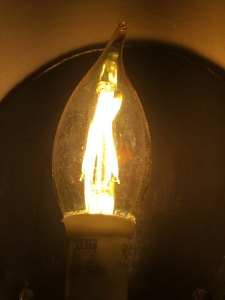Foot cramps, toe cramps, Charley Horses, even back spasms—they are all a form of muscles cramping.
Have you ever wondered where the term “Charley Horse” comes from to describe a cramp in the leg? It first pops up in newspapers and magazines around the 1880’s always referring to something terrible that afflicted baseball players. There is speculation that there was actually a horse named Charley that had a role on the baseball field. Or perhaps, a ballplayer had grown up with a lame horse named Charley. When players got cramps in their legs they walked around like the horse and the player said they looked like his horse, Charley.
While we don’t know the full etymology of the term, we do somewhat better understand what it going on when we get a muscle cramp. Here are science’s best assumptions on cramping right now:
- Puberty, pregnancy, menopause—they can all cause you to wake in the night with a cramp in your leg. So if your body is changing first consider that as a possibility.
- If you aren’t properly hydrated you are more likely to cramp. So make sure you are well hydrated for exercise, but also throughout the day. If you have chronic back pain, staying well hydrated can help. It’s easier to stay hydrated than to try and play catch up.
- If we push a muscle too hard or too fast to the point where it is exhausted, it is more likely to cramp.
- Anecdotally, in working with a lot of different bodies often when a muscle is weak or not used very often it is more likely to cramp. So if you regularly get a cramp in a specific area, perhaps it would be wise to come up with a plan to strengthen that muscle slowly.
- A recent Australian study found that when we cramp a neuromuscular reflex is inhibited. So for some reason our body isn’t getting the signal to stop the cramp before it starts. Electrically stimulating the tendon connected to the cramped muscle can release the cramp. So if you get a cramp in your lower calf, stimulating the Achilles tendon could help. That’s perhaps why stretching helps—you get the tendons to send more signals to the inhibited area and hope to get the body to relax the muscle.
These are electrically charged minerals throughout our blood and bodily fluids, but we lose them when we sweat. So when we exercises we deplete ourselves of fluids and electrolytes—two of the things that may help reduce cramping. Also, if cramps are caused by a missing connection between our muscles and nerves, electrolytes help both fire. Electrolytes conduct electricity. If you take a beaker of water and place it on electrodes attached to a light bulb nothing will happen. Add just a little bit of table salt to that same beaker and the light will come on. This works for all electrolytes. Think of electrolytes as the spark that allows for all our movement. They conduct electric impulses throughout our body. Instead of lighting us up, they enable us to move. (Pretty awesome.) There is a study that showed electrolytes didn’t play a role in athletes cramping. But athletes are different than most people and the study predominately looked at sodium. A proper balance of electrolytes probably matters. So what electrolytes do we need to consider replacing? Sodium, potassium, calcium, chloride and magnesium.
Here are some of the foods that have a good amount of each electrolyte in them:
Sodium—Salt (We tend to view salt like it’s evil, but we need it to thrive.)
Potassium: winter squash, sweet potato, potato, white beans, yogurt, halibut, broccoli, cantaloupe, banana
Calcium: yogurt, collard greens, milk, black-eyes peas, salmon, cheese, trail mix
Magnesium: pumpkin seeds, spinach, swiss chard, soy beans, sesame seeds, quinoa, black beans, cashews
Chloride: salt, seaweed, rye, tomatoes, lettuce, celery, olives
When you read about what makes us cramp, it all overlaps. Our electrolytes, hydration, hormones and nerve function all influence each other and each other’s effectiveness. It comes down to balance of a variety of systems in the body. But some you can easily try to adjust with diet and regular movement. Have a trick that always helps you release a cramp? Share in the comments.

